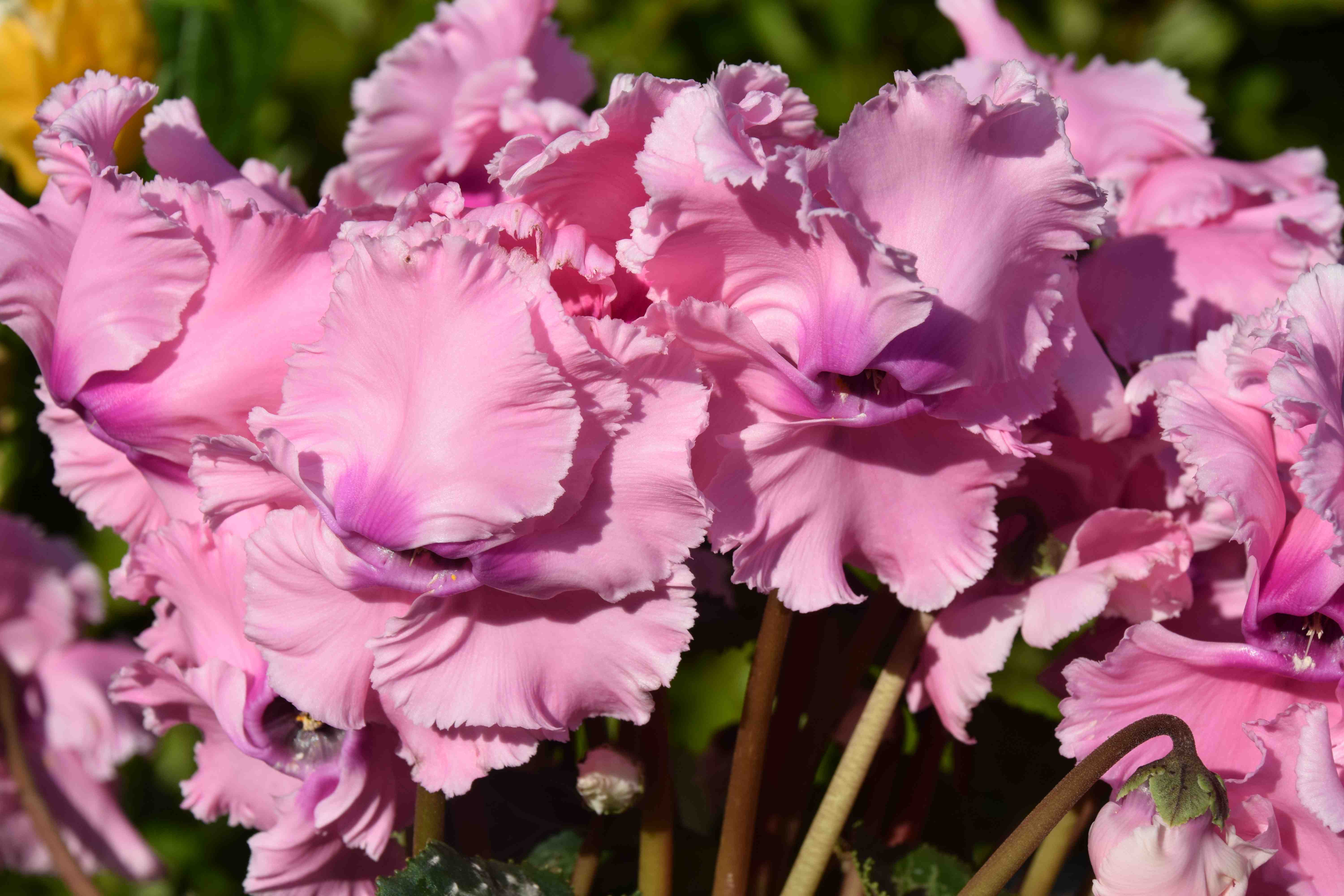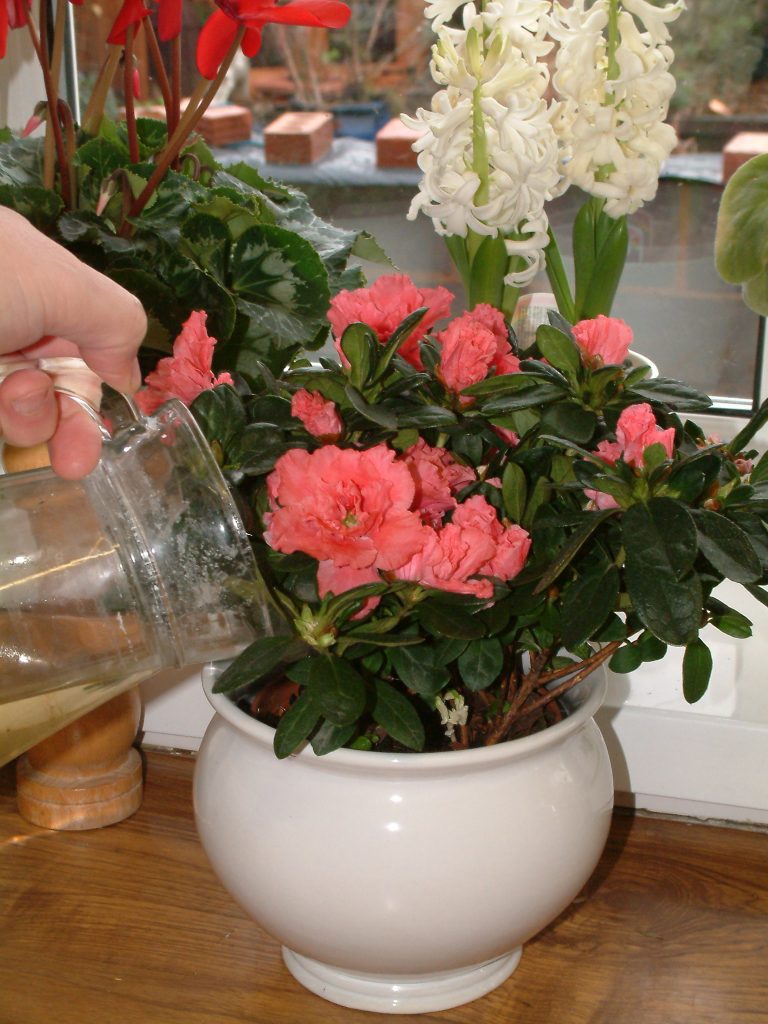
With the Festive season fast approaching, it is time to think about Christmas potplants. In the ‘old days’ the choice was usually of poinsettias, cyclamen and azaleas, and although there are more flowering potplants available today, especially orchids, these are still the big three.
I have a love-hate relationship with poinsettias: I joke about them for 10 months of the year and don’t want to see one but, at this time of year I can’t resist buying at least one. As soon as I see their bright red bracts in a garden centre it really makes me think that Christmas is here.

Whenever I see their cheerful colour I want to buy one but I am usually tempted by one of the more unusual kinds with pink or cream bracts. If the traditional red poinsettias don’t appeal, look for the more compact and subtle Princettias (R). I fell for one of these and it looks lovely on the coffee table as I write this but I know that I will have to go and buy a big red one soon!

When buying a poinsettia, always buy them from somewhere warm and out of draughts and where they are kept moist and looked after – Just like Nags Hall! Avoid plants stacked on trolleys in cold, dark places. Don’t buy a wretched, dying plant in the hope that you will be ale to rescue it.
Poinsettias are usually sold in plastic sleeves to protect them from cold and damage and check the base of these for fallen and mouldy leaves and avoid these plants. If they are heavy and sodden or very dry, leave them too. If the colourful bracts are damaged they will stay damaged so handle them with care. Look for tight, unopened flower buds in the centre of the bracts.
Once you get them home, cut off the sleeve and put them in a pot cover. They need a bright spot, out of direct sun, and warmth. A temperature of 15-21c is fine. Keep them moist but allow them to almost dry out before you water again – with tepid water. Never let them sit in a puddle of water.
Poinsettias are not really poisonous, though they should not be eaten. The sap can be irritant if it gets in the eyes and, of course, allergies are possible, as with any plant.

If you have a cool room, or want a plant for a sunny windowsill, cyclamen are the perfect choice. The ‘mini-cyclamen’ for outdoor pots are fine on windowsills and are often fragrant. If you want something bolder then the traditional cyclamen are available in a wide range of colours and shapes including frilly kinds.
Cyclamen consist of domes of leaves growing from the top of tubers at soil level and it is vital that water never gets among the base of the leaves so this is one of the few plants that really should be watered from below – standing in a saucer or bowl of water and then allowed to drain. Always let them almost dry out before you water again – even allowing them to wilt a little. They need bright light – if they are too dark and warm the leaves will become yellow and the new flowers will be paler than normal.

Remove old flowers and leaves by twisting the stem and pulling away smartly so the whole stem comes away cleanly. If you cut them off the remaining part will rot and that can spread to the rest of the plant.

Azaleas, sold for indoor display, are not hardy but require a bright, cool room and they will keep their flowers longest in a cold room and on the windowsill. Always buy them with the brown buds opening and some colour showing. Tight brown buds may not open and may be a sign they have been allowed to dry out. The pots of these plants are always packed with roots and they dry out quickly. It is vital that they never dry out and – another exception – it is permissible to let these sit in a puddle, to make sure they do not dry out. In theory they need rain water but cool, boiled water is also suitable and any water is better than allowing them to dry out.

Christmas cacti are usually sold as small plants and their flowers are extravagant and beautiful. The plants are very tough and unless the plants are very dry they should not have any problems. Keep them moist and in a temperature of at least 12c. The flowers do not last long but there are usually lots of buds and, of course, this is an easy plant to keep for another year.